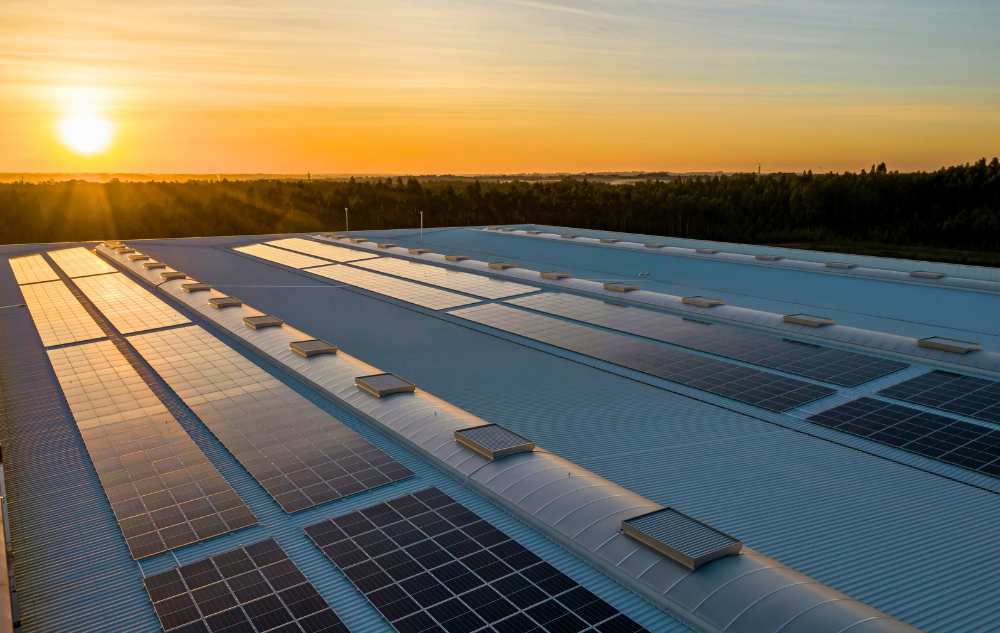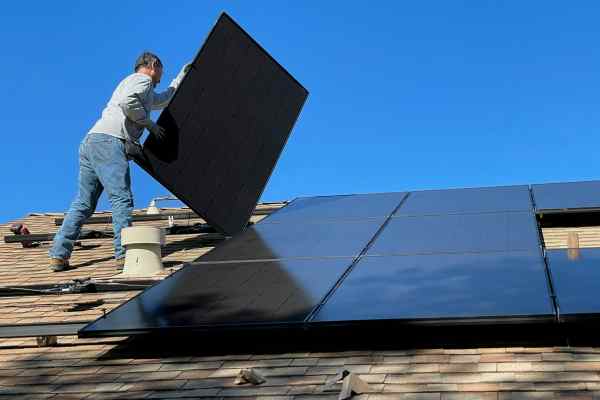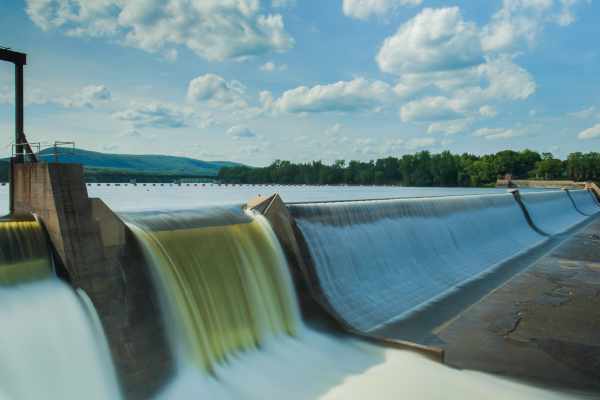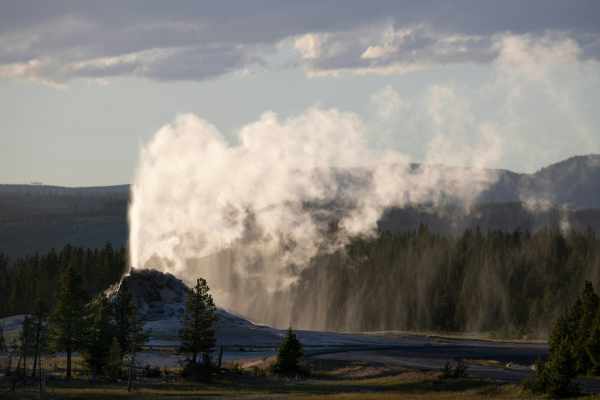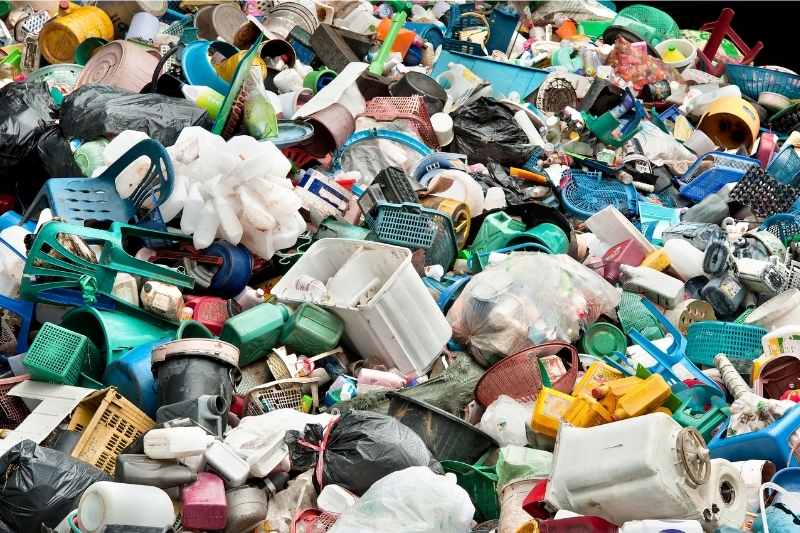Embracing Renewable Energy: A Winter Perspective
As winter blankets much of our world in a chilly embrace, our reliance on energy becomes more evident than ever. In recent years, the focus has shifted toward sustainable and renewable energy solutions to meet our needs. But with so many different choices, often unfamiliar to the average consumer, it’s easy to become overwhelmed.
Look no further! One Planet Life aims to break down these options for you, so you can feel empowered in your choice to supply your home with efficient energy when it matters most.
Solar Power: A Winter Illumination
In the dance between sunlight and solar panels, winter brings a unique nuance. While the sun’s rays may seem less intense, technological advancements have made solar panels more resilient. Even in overcast conditions, these panels work diligently to convert sunlight into electricity, offering a steady source of power during winter’s muted days.
In fact, just one hour of noontime summer sun is equal to the annual U.S. electricity demand, according to the U.S. Department of Energy.
“Most states in the United States have good-to-excellent solar resources,” the department noted. “Even places with relatively low solar resources, such as the Pacific Northwest and Alaska, can experience cost savings.”
Solar is on the rise.
While power generation by fossil fuels has peaked, an article from Clean Energy Journal predicts that by 2050, the generation of solar energy will have increased to 48% due to economic and industrial growth.
It’s no secret that converting to solar comes with a cost – anywhere between $4,600 and $16,000, on average, a 2024 expert-reviewed Forbes article notes. The average annual energy bill in 2022 was approximately $1,650, according to the U.S. Energy Information Administration.
Taking all that into account, as well as potential tax credits for clean energy, it could take you “anywhere from three to 10 years to break even on the cost of your solar energy system,” Forbes estimates. “It may take you more or less time depending on your electricity costs and financing options.”
While that may seem like a long time, you could also generate more energy than you use to contribute to the grid in your area, opening the possibility of gaining reimbursement for your contribution.
And what can’t be lost in the mix? Utilizing a renewable resource to generate energy for your home. Self-sufficiency and sustainability at its finest!
Wind Energy: Harnessing Winter’s Gusts
Wind turbines stand tall against the winter sky, capturing the kinetic energy of the brisk winds. Contrary to expectation, winter becomes a boon for wind energy. The cold air, denser than its warmer counterpart, fuels the turbines more effectively. Winter storms, a common companion in some regions, amplify the power generated by these turbines.
Wind energy offers a multitude of benefits, making it one of the most promising renewable energy sources in the world.
Wind energy is clean and renewable, meaning it produces minimal greenhouse gas emissions and doesn’t deplete finite resources. Harnessing the power of wind helps reduce dependence on fossil fuels and mitigates climate change.
“Wind energy is actually a byproduct of the sun,” the Department of Energy states. “The sun’s uneven heating of the atmosphere, the earth’s irregular surfaces (mountains and valleys), and the planet’s revolution around the sun all combine to create wind. Since wind is in plentiful supply, it’s a sustainable resource for as long as the sun’s rays heat the planet.”
Wind energy has been a major driver of economic development as well.
The wind energy sector creates jobs in manufacturing, installation, maintenance, and operation of wind farms. In 2022, 125,580 U.S. jobs helped power the domestic land-based wind energy industry, a 4.5% increase from the previous year. Additionally, wind energy projects often contribute to local economic development through tax revenues and land lease payments to landowners.
Investing in wind energy enhances energy security by diversifying the energy mix. Countries can reduce reliance on imported fossil fuels and strengthen their energy independence by tapping into their domestic wind resources. In 2022, the U.S. invested $84 million in new distributed wind projects, nearly a 50% increase from the previous year, according to the 2023 Wind Market Report.
Wind energy projects can range from small-scale installations to large wind farms, offering scalability to meet diverse energy needs. Moreover, wind turbines can be combined with other renewable energy sources and energy storage technologies to create hybrid systems, enhancing flexibility and reliability.
The environmental benefits are impossible to ignore.
Wind energy production has minimal environmental impacts compared to conventional fossil fuel-based power generation. It reduces air and water pollution, conserves water resources, and helps protect ecosystems and wildlife habitats.
While some may express concern regarding the risks wind turbines pose to migratory bird populations, numbers of bird deaths are actually very low in comparison to other manmade structures, such as high-rise buildings. Studies are even in process to lower these already minimal risks even more through methods such as paint color choices and other tactics to steer birds away from the turbines before collisions can happen.
As technology continues to evolve and costs decline, wind energy is poised to play an increasingly prominent role in the global transition to a cleaner and more sustainable energy future.
Interested in learning how to install your own turbine system? Check out this resource from the Department of Energy to see if your property fits the criteria!
Hydropower: Navigating Frozen Waters
Rivers and lakes may freeze over in winter, but the spirit of hydropower endures. Traditional hydropower faces challenges, but innovative systems can thrive in cold climates. The precipitation that graces winter ensures a continuous flow of water, sustaining hydropower as a reliable energy source.
Harnessing the energy of flowing water to generate electricity makes hydropower a renewable and sustainable energy source. As long as water continues to flow, hydropower plants can produce electricity without depleting finite resources.
Hydropower is a clean energy source that produces minimal greenhouse gas emissions during operation.
Unlike fossil fuel-based power plants, hydropower plants do not burn fuel, helping to reduce air pollution and mitigate climate change.
Hydropower plants can quickly adjust their electricity output to respond to changes in demand or grid conditions. This flexibility makes hydropower a valuable resource for balancing the grid, integrating intermittent renewable energy sources, and providing grid stability and reliability.
These projects often include reservoirs that can store water for electricity generation and manage water resources for various purposes, including irrigation, flood control, and recreation. By regulating river flows and controlling floods, hydropower dams help protect downstream communities and ecosystems.
Hydropower plants have a long lifespan, often lasting decades with proper maintenance.
Once built, hydropower plants have relatively low operating and maintenance costs compared to other energy sources, making them economically competitive over the long term.
This energy source isn’t perfect, though. Volatility in weather patterns resulting from climate change can affect the resiliency of hydropower, specifically droughts that drain the source. Additionally, the surrounding habitats and animals that thrive in them can be displaced by large-scale dam-building projects.
“Despite it being the largest renewable source of electricity, hydropower does have its drawbacks,” Earth.org notes. “The most significant one of which is its damage to the surrounding environment and ecosystem. Most hydroelectric power plants require the construction of a dam, which would result in the destruction and fragmentation of the surrounding habitats.”
Geothermal Energy: Earth’s Cozy Embrace
Beneath the surface, the earth’s warmth becomes a reliable ally in the pursuit of sustainable energy. Geothermal power plants tap into this internal heat, producing steam that turns turbines and generates electricity. Unaffected by external weather conditions, geothermal energy stands resilient, providing a consistent source of power for heating during winter’s chill.
Geothermal energy utilizes heat stored beneath the Earth’s surface, often in the form of hot water or steam, to generate electricity or provide direct heating.
This heat is accessed through geothermal reservoirs located deep underground. Geothermal energy is a renewable resource that relies on the earth’s natural heat, which is continually replenished by geothermal processes.
Geothermal power plants produce minimal greenhouse gas emissions compared to fossil fuel-based power plants, about 5.7 g of carbon dioxide, making them a cleaner energy alternative. These plants can provide baseload power, meaning they can generate electricity continuously, unlike some other renewable energy sources like solar and wind, which are more intermittent. They also have a long lifespan, typically exceeding 24 years, and require relatively low maintenance once operational.
As with an energy source, geothermal has its own set of drawbacks.
These resources are limited to regions with high heat flow from the earth’s interior, such as volcanic areas and tectonic plate boundaries, making them geographically constrained. Additionally, developing geothermal projects, especially for electricity generation, can require significant upfront investment due to drilling and exploration expenses.
While it is considered renewable, geothermal still requires resource depletion. Continuous extraction of geothermal fluids can lead to reservoir depletion and decreased productivity over time if not managed sustainably. While geothermal energy has lower emissions compared to fossil fuels, some environmental concerns include the release of greenhouse gases and potentially harmful substances such as hydrogen sulfide and other volatile compounds from geothermal reservoirs.
Geothermal energy offers several advantages, including its renewable nature, low emissions, reliability, and direct-use applications.
However, challenges such as location constraints, high initial costs, environmental impacts, and resource management issues need to be carefully considered and addressed to maximize the potential of geothermal energy as a sustainable energy source.
As winter settles in, renewable energy resources weave a narrative of resilience and sustainability.
From the subtle glow of solar panels to the majestic dance of wind turbines, these technologies promise not just warmth for our homes but also a greener, more sustainable future. Before taking the leap to a cleaner source, be sure to do your own research to see what option is best for your home and community. Let the chill of winter be met with the warmth of renewable energy, lighting the way to a cleaner, more resilient tomorrow.
Looking for more?
Discover how rising energy demands is quickly outpacing fledgling renewable energy programs, and what we can do about it.

Written by Carley Kimball
Freelance Journalist and OPL Content Contributor
“I’ve always tried to implement planet-friendly practices in my life but didn’t quite realize just how much of an impact individuals can make until I was introduced to One Planet Life. I’m so excited to be able to utilize my professional skills to contribute valuable information and positive personal experiences to help make the world a better place.”

